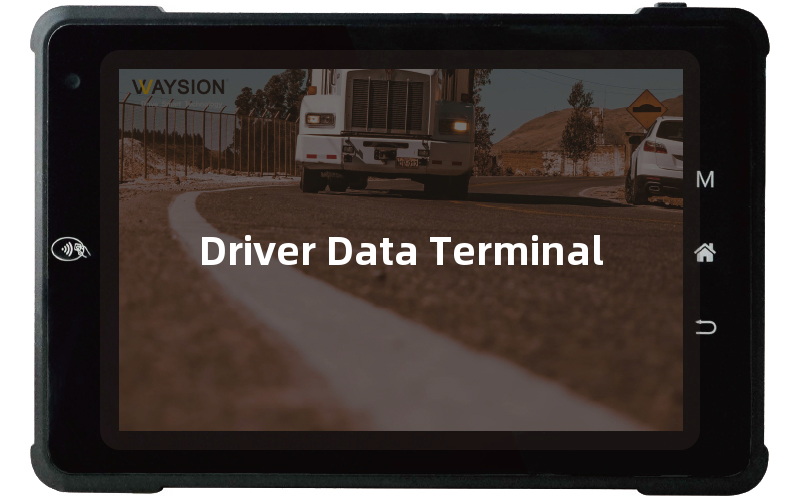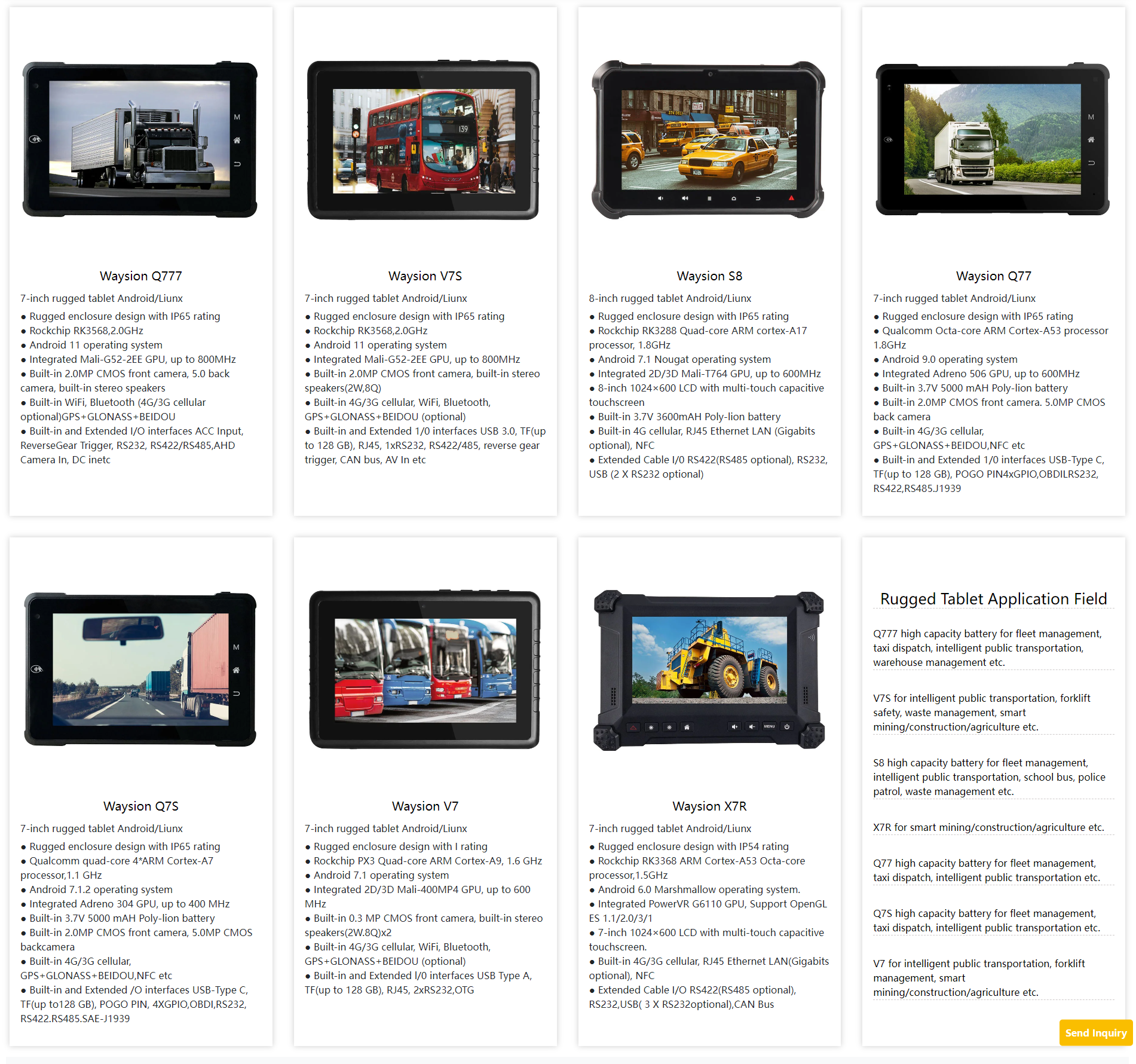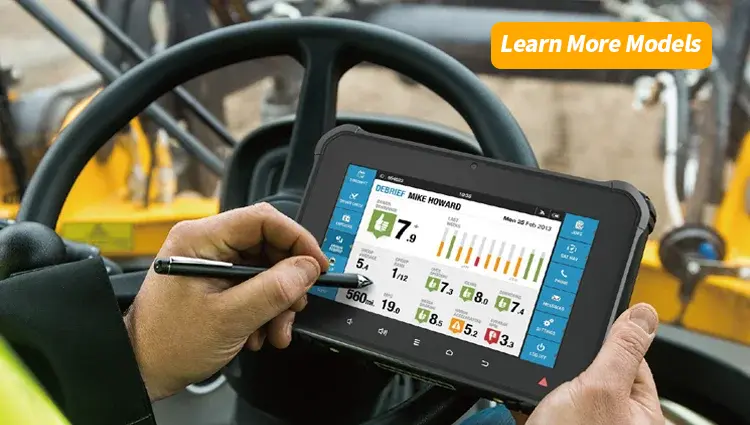Unraveling the Future with Driver Data Terminal
In the realm of fleet management, the advent of driver data terminals heralds a new era of efficiency, safety, and data-driven decision-making. From optimizing routes to enhancing vehicle maintenance, these terminals have become indispensable tools for modern fleets. This article explores the multifaceted benefits and functionalities of driver data terminals, delving into their impact on the transportation industry and beyond.

Empowering Fleet Management
Driver data terminals revolutionize fleet management by providing real-time insights into vehicle performance, driver behavior, and route efficiency. With advanced tracking capabilities and telemetry data, fleet managers can streamline operations, mitigate risks, and maximize resource utilization.
Enhancing Safety Measures
Safety remains paramount in the transportation industry, and driver data terminals play a pivotal role in fostering a culture of safety. By monitoring driver behavior, detecting fatigue, and facilitating compliance with regulatory standards, these terminals help prevent accidents and ensure the well-being of drivers and cargo.
Optimizing Vehicle Maintenance
Proactive maintenance is key to prolonging the lifespan of fleet vehicles and minimizing downtime. Driver data terminals enable predictive maintenance by monitoring engine diagnostics, fuel consumption, and component wear. By identifying potential issues in advance, fleet managers can schedule maintenance tasks strategically, reducing costs and enhancing reliability.
Improving Route Planning
Efficient route planning is essential for minimizing fuel consumption, reducing emissions, and optimizing delivery times. Driver data terminals leverage GPS technology and traffic data to suggest optimal routes, avoiding congestion and road closures. Moreover, these terminals facilitate dynamic route adjustments based on real-time conditions, ensuring timely deliveries and customer satisfaction.
Boosting Operational Efficiency
Driver data terminals streamline administrative tasks and facilitate communication between drivers and dispatchers. Through features such as electronic logging and two-way messaging, these terminals enable seamless coordination, documentation, and reporting. By automating manual processes, fleet managers can allocate resources more efficiently and focus on strategic initiatives.
Enhancing Customer Experience
In today’s competitive landscape, customer experience is a key differentiator for businesses. Driver data terminals contribute to enhanced customer satisfaction by providing accurate delivery ETAs, facilitating proof of delivery, and enabling transparent communication. By delivering exceptional service, fleets can build trust and loyalty among their clientele.
Fostering Sustainability
Environmental sustainability is an increasingly pressing concern for the transportation industry. Driver data terminals support sustainability efforts by promoting fuel-efficient driving behaviors, optimizing route planning to reduce emissions, and monitoring vehicle performance metrics. By minimizing their carbon footprint, fleets can contribute to a greener future.
Navigating Regulatory Compliance
Compliance with industry regulations and standards is essential for fleet operators to avoid penalties and maintain operational integrity. Driver data terminals assist in regulatory compliance by automatically recording driver hours, ensuring adherence to HOS (Hours of Service) regulations, and generating comprehensive reports for audits. By staying compliant, fleets can uphold their reputation and mitigate legal risks.
Harnessing Data Analytics
Data is the lifeblood of modern business operations, and driver data terminals serve as invaluable sources of actionable insights. By analyzing telemetry data, driver performance metrics, and operational trends, fleet managers can identify areas for improvement, optimize resource allocation, and make informed strategic decisions. Leveraging the power of data analytics, fleets can stay ahead of the competition and drive innovation.
Empowering Driver Training
Continuous training and development are essential for enhancing driver skills, safety awareness, and operational proficiency. Driver data terminals facilitate targeted training initiatives by providing performance feedback, identifying areas for improvement, and offering personalized coaching insights. By investing in driver training programs supported by data-driven feedback, fleets can cultivate a culture of excellence and continuous improvement.
Driving Business Growth
Ultimately, driver data terminals serve as catalysts for business growth and competitive advantage. By optimizing fleet operations, enhancing safety measures, and leveraging data-driven insights, fleets can achieve greater efficiency, productivity, and profitability. In an ever-evolving landscape, embracing technological innovations such as driver data terminals is imperative for staying ahead of the curve and securing long-term success.
Driver Data Terminal: Revolutionizing Fleet Management
The driver data terminal (DDT) stands at the forefront of technological innovation in fleet management. Combining advanced hardware with sophisticated software solutions, DDTs empower fleet operators with real-time visibility, actionable insights, and enhanced control over their assets.
Hardware Components of a DDT
1. Telematics Unit
- The telematics unit serves as the backbone of the DDT, collecting and transmitting vital vehicle data to the central management system.
2. Display Screen
- The display screen provides drivers with intuitive interfaces for navigation, communication, and performance monitoring.
3. Sensors and Interfaces
- Various sensors and interfaces, including GPS receivers, accelerometers, and CAN bus connections, capture telemetry data and vehicle diagnostics.
4. Connectivity Modules
- Connectivity modules, such as cellular modems and Wi-Fi adapters, enable seamless communication between the DDT and remote servers.

Software Solutions for Fleet Optimization
1. Fleet Management Software
- Comprehensive fleet management software platforms integrate with DDTs to provide fleet operators with centralized control over their assets.
2. Driver Performance Analytics
- Advanced analytics modules analyze driver behavior, identify patterns, and recommend interventions to improve safety and efficiency.
3. Route Optimization Algorithms
- Route optimization algorithms leverage real-time traffic data and historical patterns to suggest the most efficient routes for fleet vehicles.
4. Compliance and Reporting Tools
- Compliance and reporting tools automate regulatory compliance tasks, generate audit-ready reports, and ensure adherence to industry standards.
Key Benefits of Implementing DDTs
1. Enhanced Visibility
- DDTs provide real-time visibility into fleet operations, enabling fleet managers to monitor vehicle locations, status, and performance metrics.
2. Improved Safety
- By monitoring driver behavior and vehicle conditions, DDTs help prevent accidents, reduce risks, and promote safe driving practices.
3. Increased Efficiency
- Streamlined workflows, optimized routes, and proactive maintenance facilitated by DDTs result in greater operational efficiency and cost savings.
4. Data-Driven Decision Making
- Leveraging telemetry data and analytics insights, fleet managers can make informed decisions to optimize resource allocation and strategic planning.
FAQs (Frequently Asked Questions)
What is a driver data terminal?
A driver data terminal (DDT) is a technological solution used in fleet management to monitor vehicle performance, track driver behavior, and optimize operational efficiency.
How do driver data terminals enhance safety?
Driver data terminals enhance safety by monitoring driver behavior, detecting fatigue, and facilitating compliance with regulatory standards, thereby preventing accidents and ensuring the well-being of drivers and cargo.
What role do driver data terminals play in route planning?
Driver data terminals leverage GPS technology and traffic data to suggest optimal routes, avoiding congestion and road closures. Moreover, these terminals facilitate dynamic route adjustments based on real-time conditions, ensuring timely deliveries and customer satisfaction.
How do driver data terminals contribute to environmental sustainability?
Driver data terminals support sustainability efforts by promoting fuel-efficient driving behaviors, optimizing route planning to reduce emissions, and monitoring vehicle performance metrics, thereby minimizing the carbon footprint of fleets.
How do driver data terminals assist in regulatory compliance?
Driver data terminals assist in regulatory compliance by automatically recording driver hours, ensuring adherence to Hours of Service (HOS) regulations, and generating comprehensive reports for audits, thereby helping fleets avoid penalties and maintain operational integrity.
How can driver data terminals empower driver training initiatives?
Driver data terminals facilitate driver training initiatives by providing performance feedback, identifying areas for improvement, and offering personalized coaching insights, thereby enhancing driver skills, safety awareness, and operational proficiency.
Conclusion
In conclusion, driver data terminals represent a paradigm shift in fleet management, offering unparalleled capabilities to optimize operations, enhance safety, and drive business growth. By harnessing the power of data and technology, fleets can navigate the challenges of the modern transportation landscape with confidence and efficiency.








